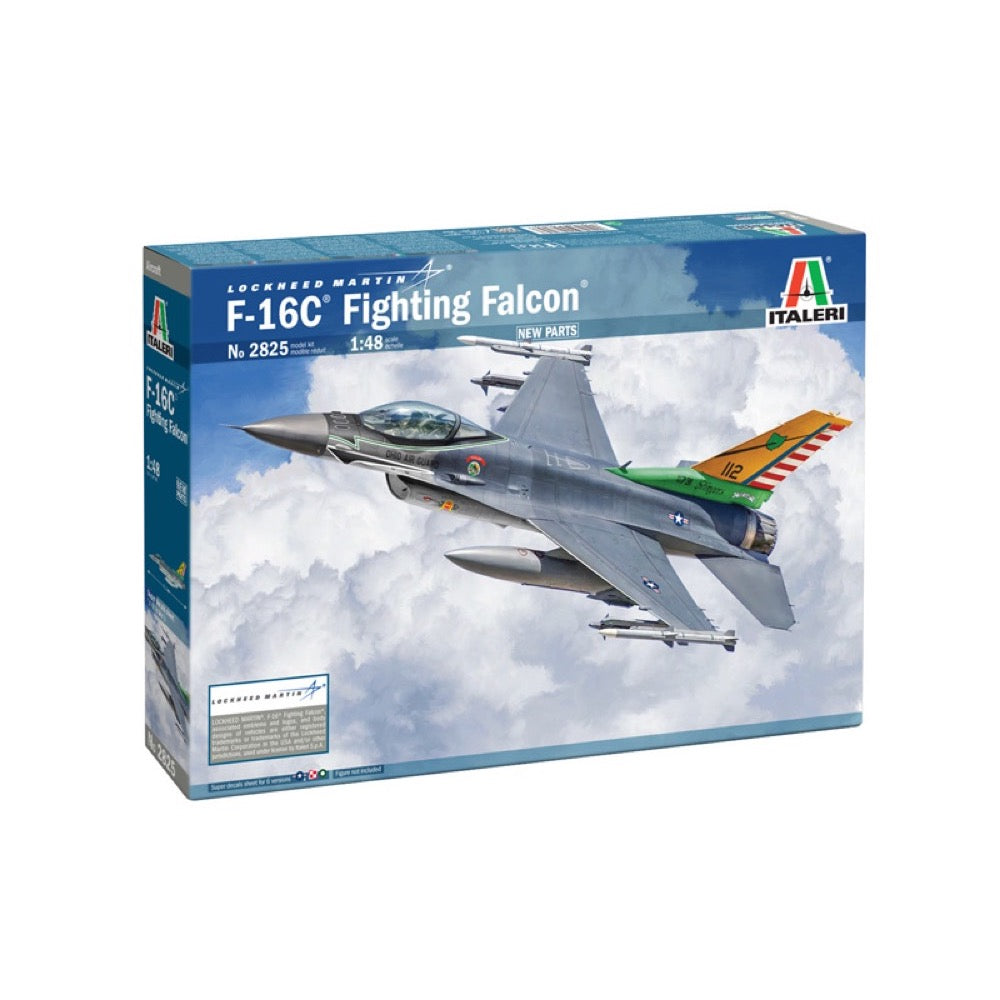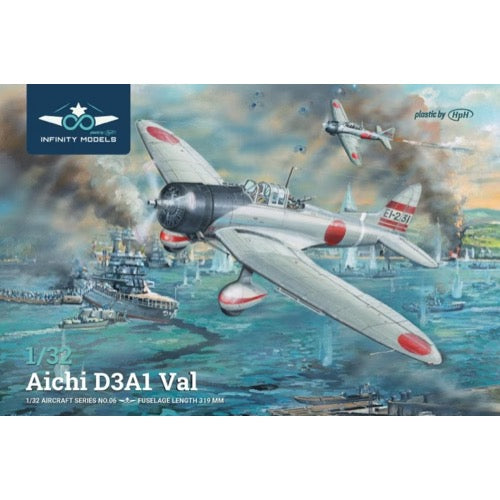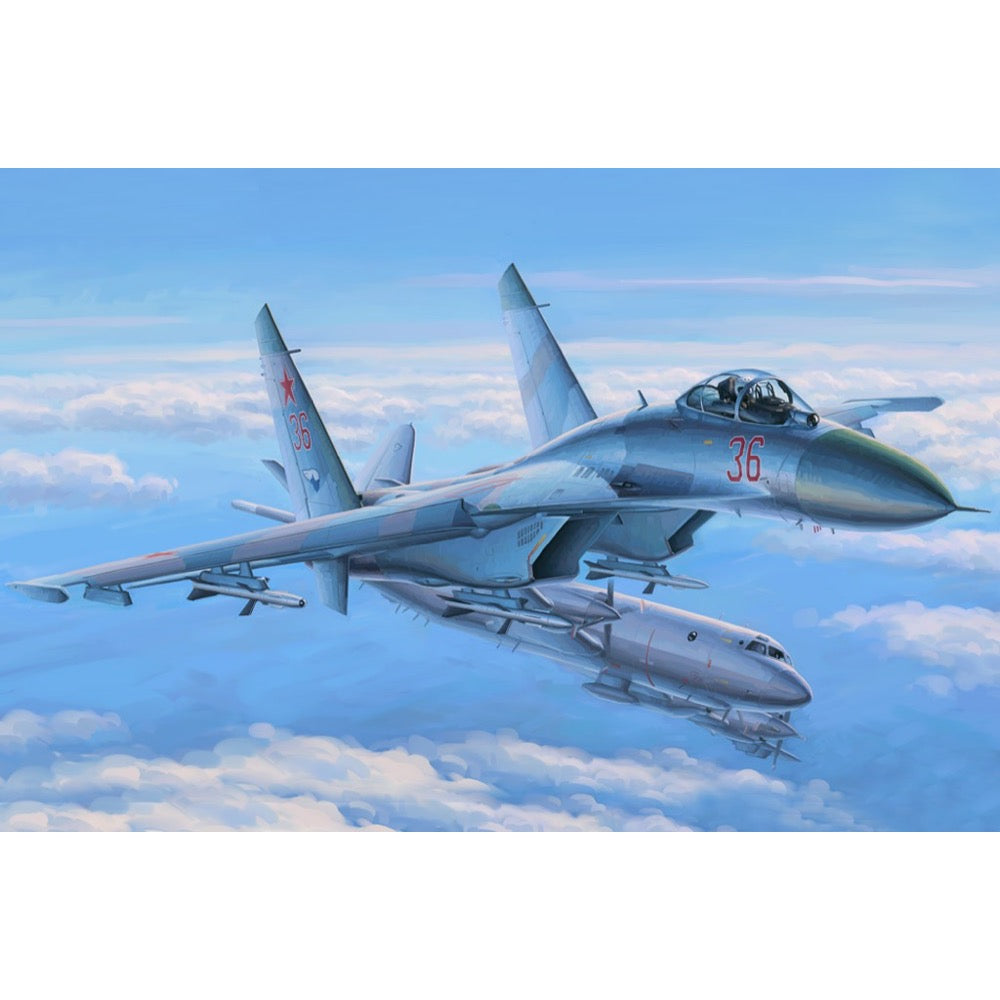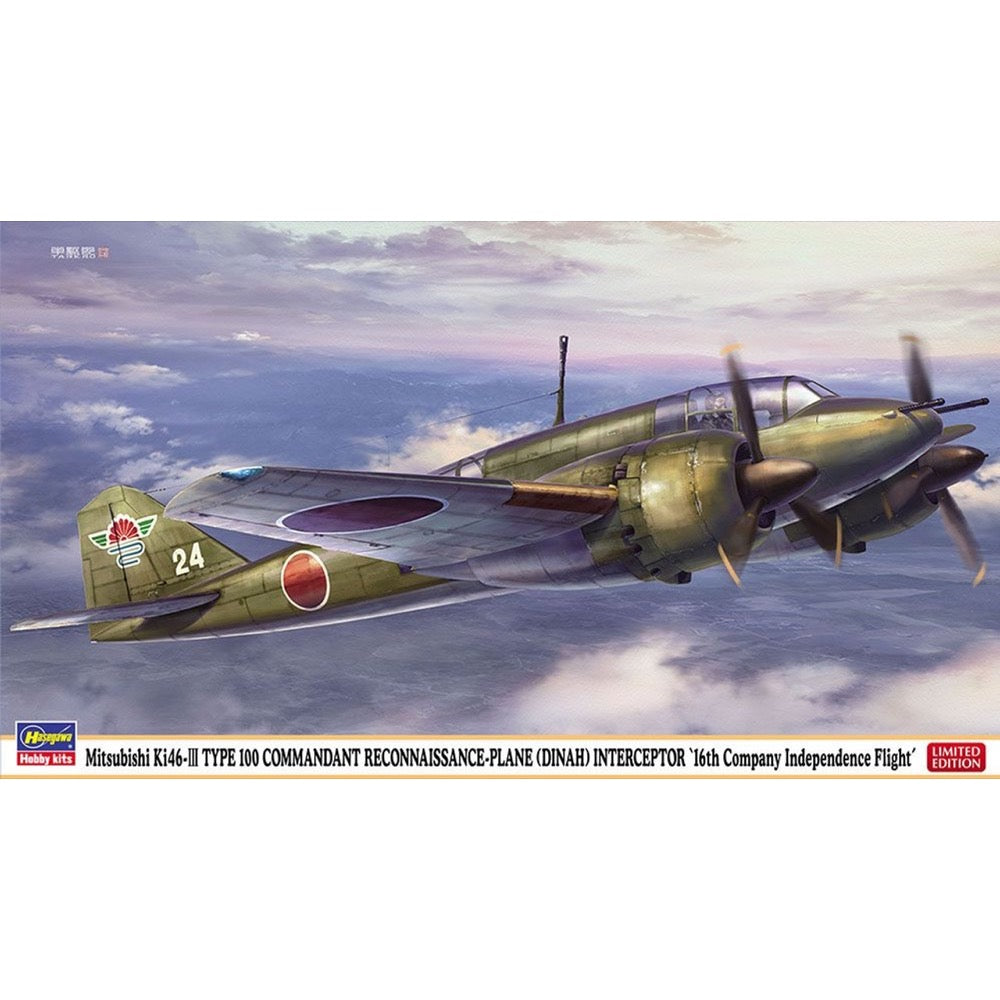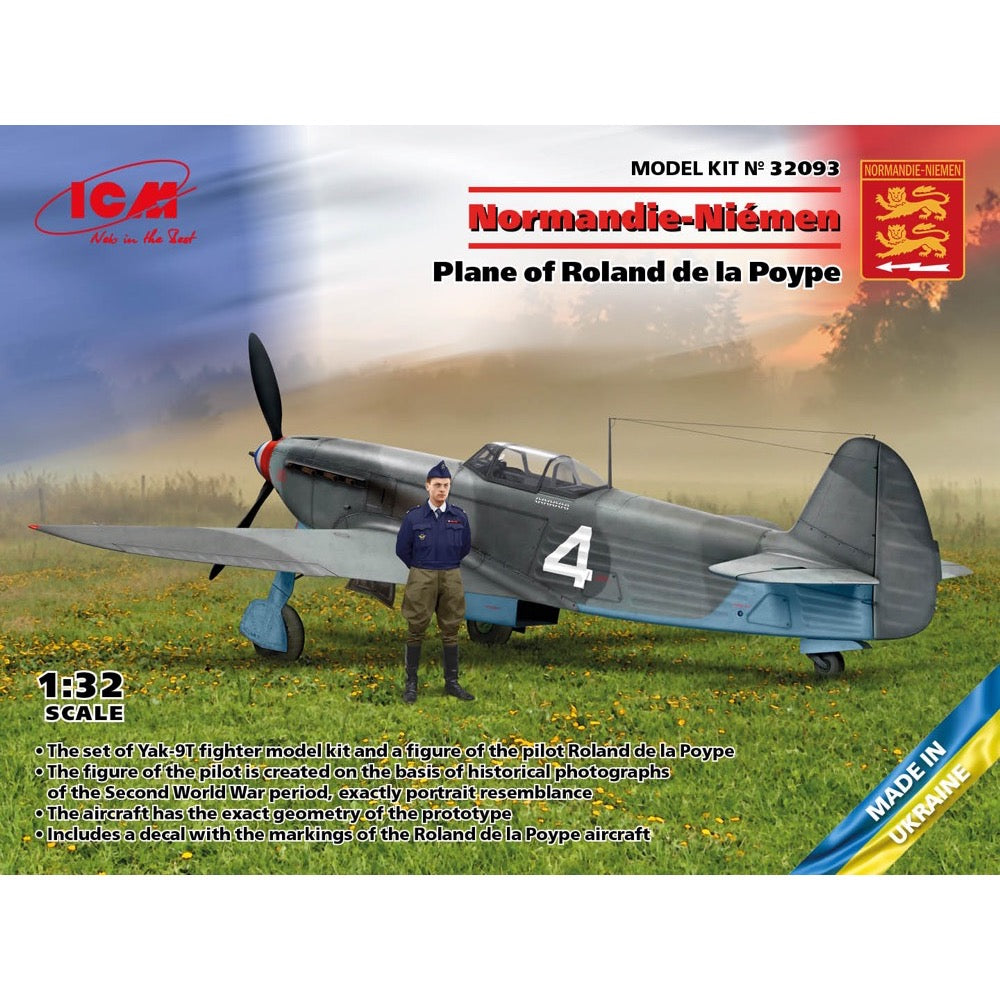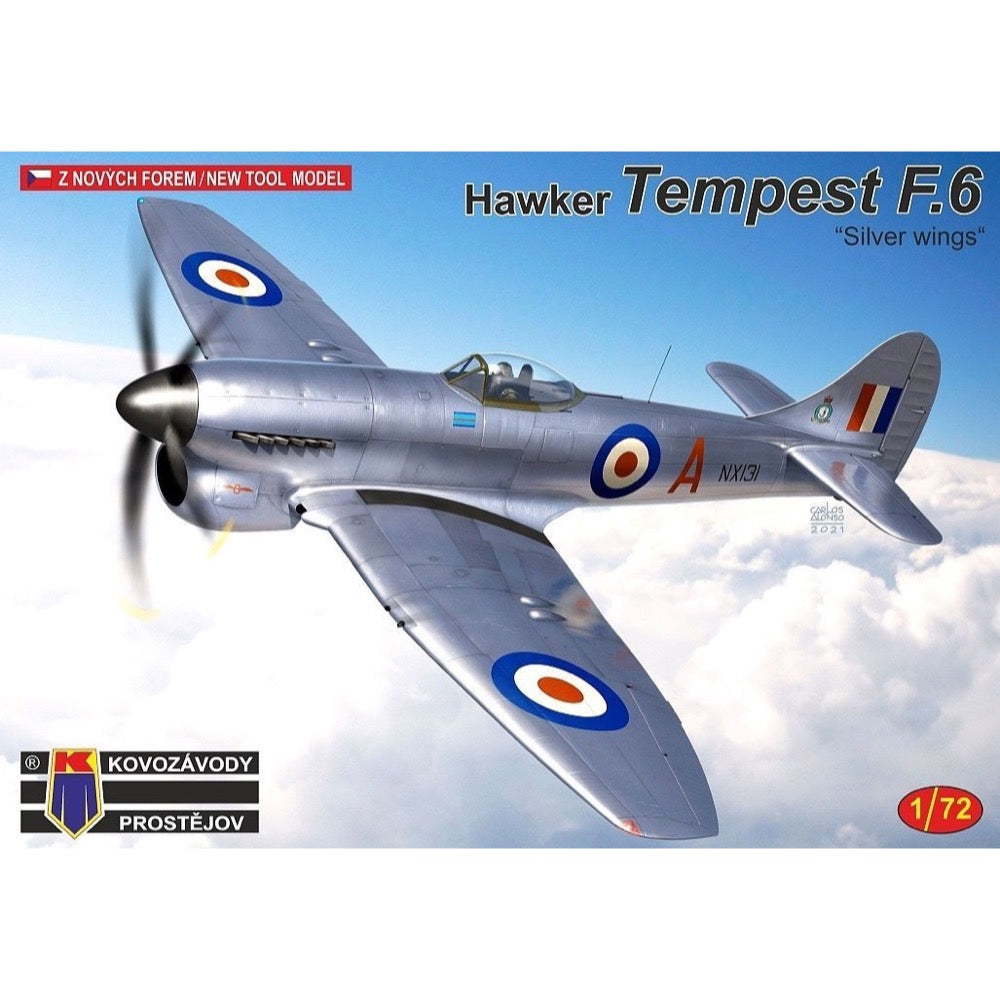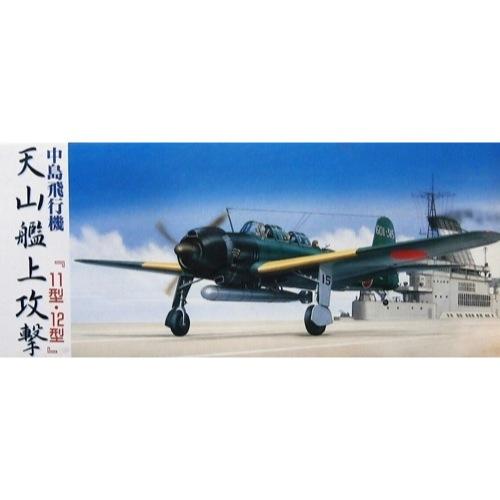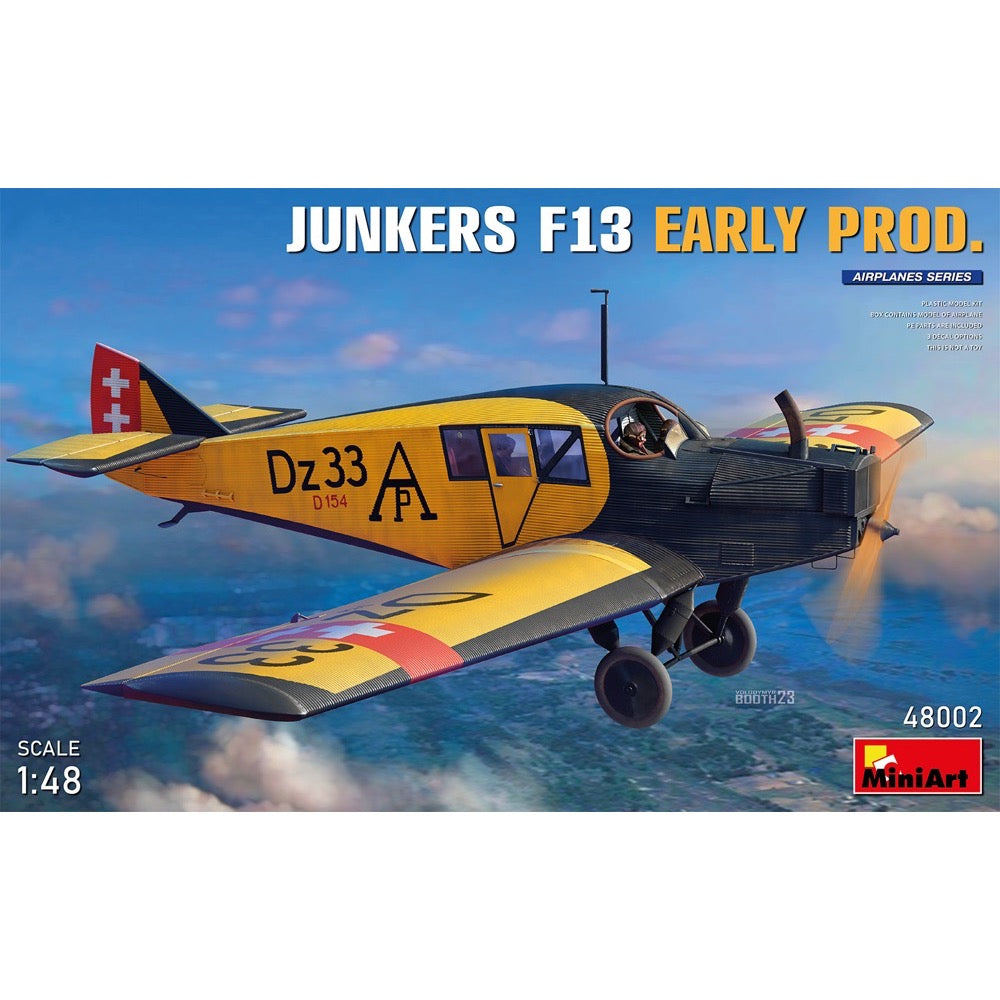
MiniArt 48002 1/48 Junkers F.13 Passenger Plane. Early Version
33.00
$
<h3>Discover the Legacy of Aviation with Junkers F13 Early Production 1:48 scale!</h3>
<p>Introducing the iconic Junkers F13, the world’s first all-metal transport aircraft. This detailed 1:48 scale model captures the pioneering and innovative design of the early 20th-century aviation era. Model represents historic aircraft’s essence, offering Modelers an opportunity to recreate a vital point in aviation history.</p>
<h3>Features</h3>
<ul>
<li>Authentic Details: Experience the unique corrugated surface of the Junkers F13.</li>
<li>High-Quality Components: The kit features high-quality plastic parts.<br>Detailed Interior and Engine: Accurate representation of the cockpit and engine compartments.</li>
<li>Decals Included: 3 Decal options, providing historical accuracy and visual appeal.</li>
<li>PE Parts Included: Enhance your model with included photo-etched parts for additional detailization.</li>
<li>This MiniArt model kit is perfect for both seasoned modelers and aviation enthusiasts looking to explore the fascinating world of early passenger aircraft. Add a touch of history to your collection with the Junkers F13 Early Production model.</li>
</ul>
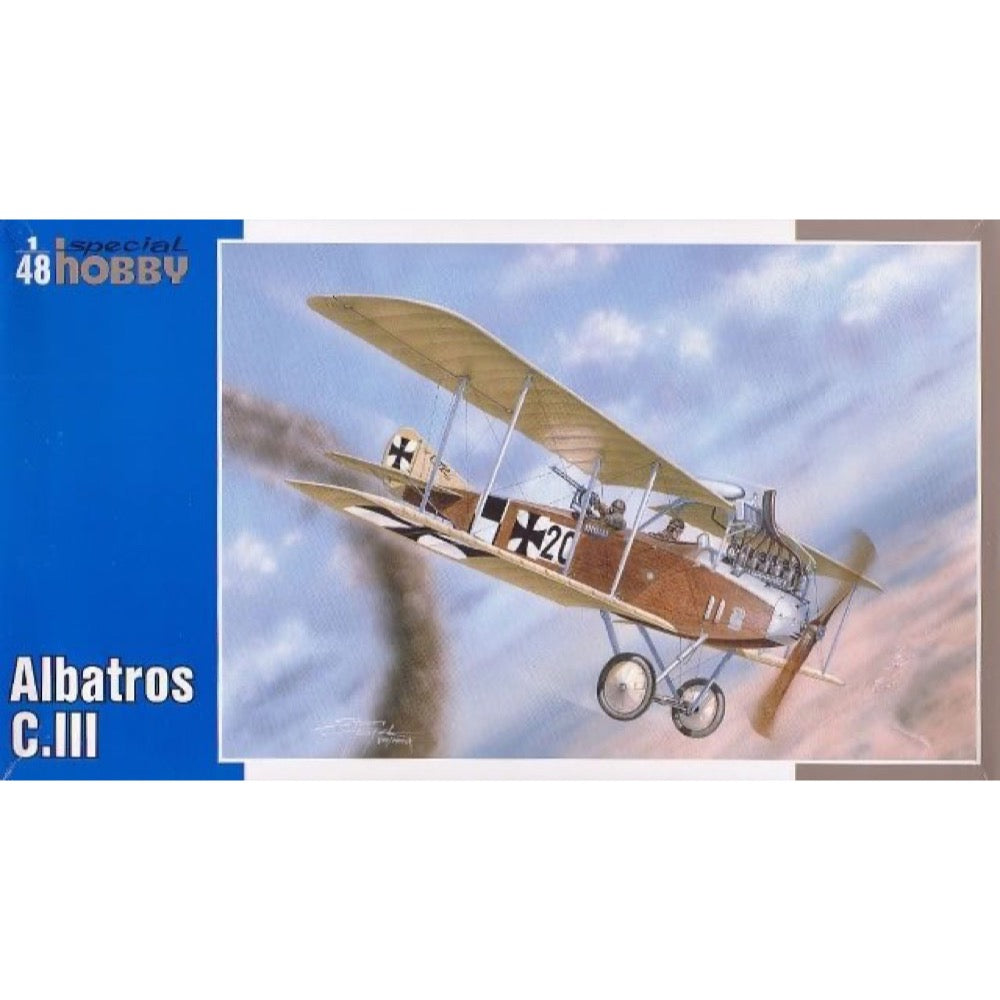
Special Hobby 1/48 Albatros C.III
30.00
$
<p>Albatros D.III was a single-seater airplane, a biplane with a mixed structure, mostly wooden, with an open cockpit and a classic-fixed landing gear. Designed in 1916. and built at the German Albatros-Werke factory in Berlin. In the first half of 1916, Eng. Robert Thelen, using the experience of aviators using Albatros DI and D.II fighter planes, began developing a new fighter plane for the German aviation. According to the requirements, it was to be a plane with good maneuverability, the ability to quickly maneuver in a vertical position, high rate of climb and resistance to overloads. The prototype of the Albatros D.III aircraft was first flew in September 1916. It turned out to be easy to fly, maneuverable, durable and with good performance. After introducing minor corrections, serial production was launched in 1917. A total of 1,340 Albatros D.III aircraft were manufactured, mainly at the Ostdeutsche Albatros-Werke plant in Piła. From 1917, the planes were directed to the German air units to the front, mainly to the west. They had a faster rate of climb than the Allied planes, but were inferior to their maneuverability. The famous German airmen from World War I Manfred von Richthofen and Ernst Udet fought on the Albatros D.III plane.</p>
<p>Includes exploded-view pictorial-type instructions, with some notes in Czech and English.</p>
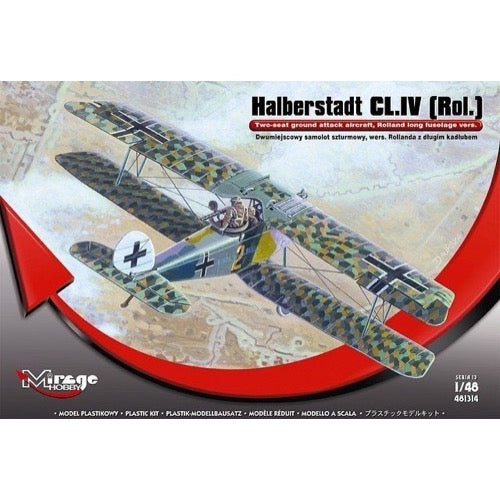
Mirage 481314 1/48 Halberstadt CL.IV Rollang Long Fuselage Version
42.00
$
<p>From Mirage Hobby comes this detailed kit of the Halberstadt CL.IV (Rol) in 1/48 scale!</p>
<h3>Features</h3>
<ul>
<li>
<p>Parts molded in grey plastic</p>
</li>
<li>
<p>Photo-etched metal detail parts</p>
</li>
<li>
<p>Decals</p>
</li>
</ul>
<h3>Specifications</h3>
<ul>
<li>
<p>Item Size: 35.4cm x 23.4cm x 5.0cm</p>
</li>
</ul>
<p> </p>
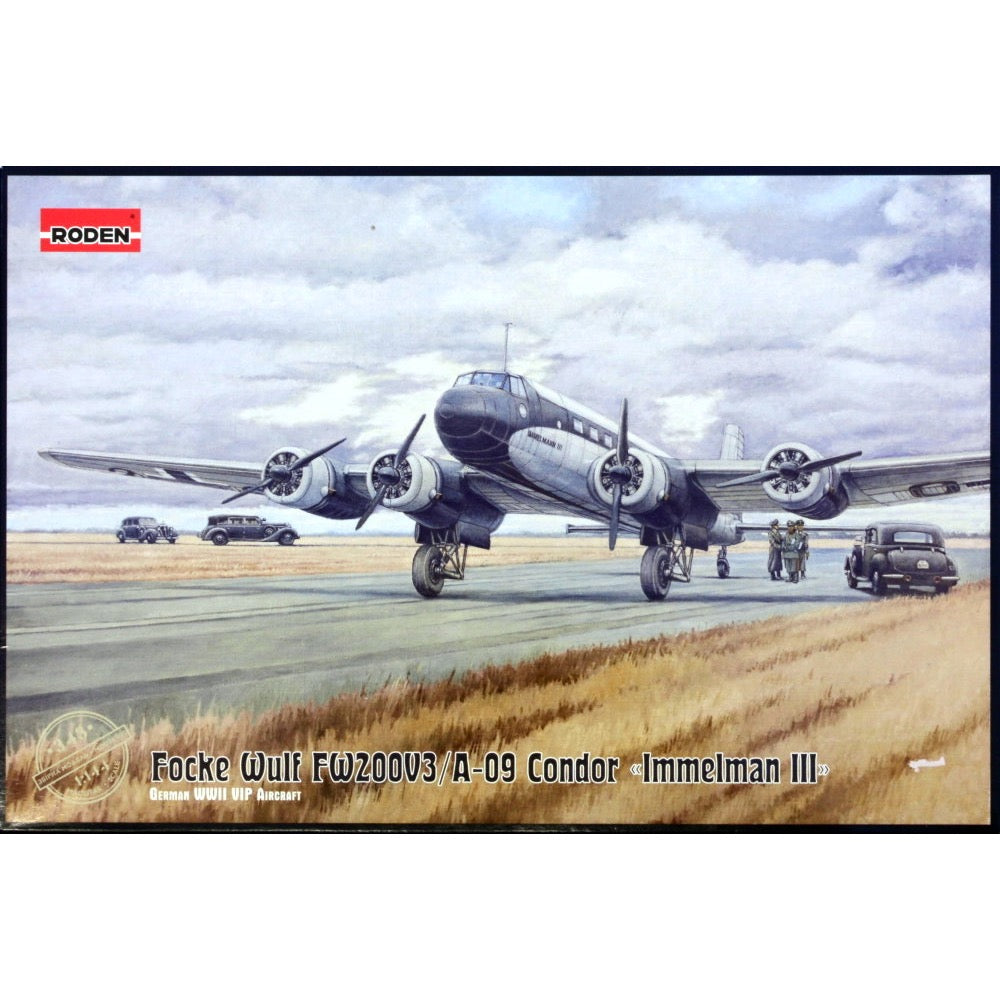
Roden 343 1/144 Focke-Wulf F200V3/A-09 Condor Immelman III
14.00
$
<h3>Focke Wulf FW200V3/A-09 Immelman III</h3>
<p>In the mid-1920s, two former German military pilots, Heinrich Focke and Georg Wolf, set up an aircraft company in Bremen, the main purpose of which was to build passenger planes, as at that time Germany was prohibited from having not only armed forces but also military aircraft. In the mid-1920s and early 1930s, the company managed to build several successful types of aircraft, but with the coming to power of the National Socialists began a gradual departure from the conditions of Versailles with the tacit agreement of the former victorious states.</p>
<p>In the mid-1930s, a real boom in passenger air traffic began, and the leading German airline, Lufthansa, certainly did not want to lose its position in this area. In 1935, a 4-engine passenger aircraft project was commissioned that could carry at least 25 long-distance passengers. The winner was Focke-Wulf with its FW-200 project, developed by Chief Engineer Kurt Tank.</p>
<p>In 1937, the first prototype was built, which due to the incomplete readiness of the new BMW132G engines received a temporary American Pratt & Whittney Hornet. The first flight of the new aircraft, which was named Condor, not least because of its size, took place on the 6 of September of the same year. According to the results of tests, a number of significant changes were made to the design, and the second car, which also received its own name Westfalen, began regular flights as part of the Lufthansa fleet in the summer of 1938.</p>
<p>This modification with its own index FW200A-0 soon added Lufthansa fleet with the following cars Saarland, Nordmark, Friesland, Holstein, Pommern, Kurmark. Another FW200A-0 that was being prepared for transfer to Lufthansa was an Ostmark aircraft, but its fate turned out to be much more interesting than that of its relatives.</p>
<p>Initially, this machine was transferred to the RLM research center in Rehlin for research. However, as the war quickly approached, Germany’s military leadership was already planning to seize large areas outside its own country, so a special air detachment was created at the direct initiative of Luftwaffe leader Hermann Goering exclusively for the needs of the Reich’s top leaders</p>
<p>The FW200A-0, which was located in Rehlin, was converted into a VIP car with a luxury cabin, reinforced armor and an emergency evacuation system in the event of a possible air disaster with distinguished passengers on board. The plane was soon inaugurated by the leader of Nazi Germany, Adolf Hitler, who proposed (traditionally with the previous boards he used as German chancellor) to give it his own name, Immelmann III, in honor of the famous First World War air ace Max Immelmann. This machine has been used by the German Fuhrer since 1939 as part of a special aviation unit for senior management</p>
<p>With the beginning of the Eastern campaign, this FW200A-0 was repeatedly used by Adolf Hitler for flights to the German-occupied territory of the USSR. With the arrangement of the «Wolf’s Lair» pond near Vinnytsia, flights from Germany to this region of Ukraine took place quite often, the last such «visit» took place in early 1943. After the turn of the war and the gradual collapse of various voyages of the German leader Immelmann III almost ceased to be used and was stored at a military airfield near Berlin, while being fully prepared for departure every day. It was destroyed in the summer of 1944 directly at the airport during an Allied air raid on Berlin.</p>
<h3>Contents</h3>
<ul>
<li>
<p>Plastic Sprues With Model Parts</p>
</li>
<li>
<p>Waterslide Decal Sheet</p>
</li>
<li>
<p>Assembly Instructions With Marking And Painting Options</p>
</li>
</ul>
<p> </p>
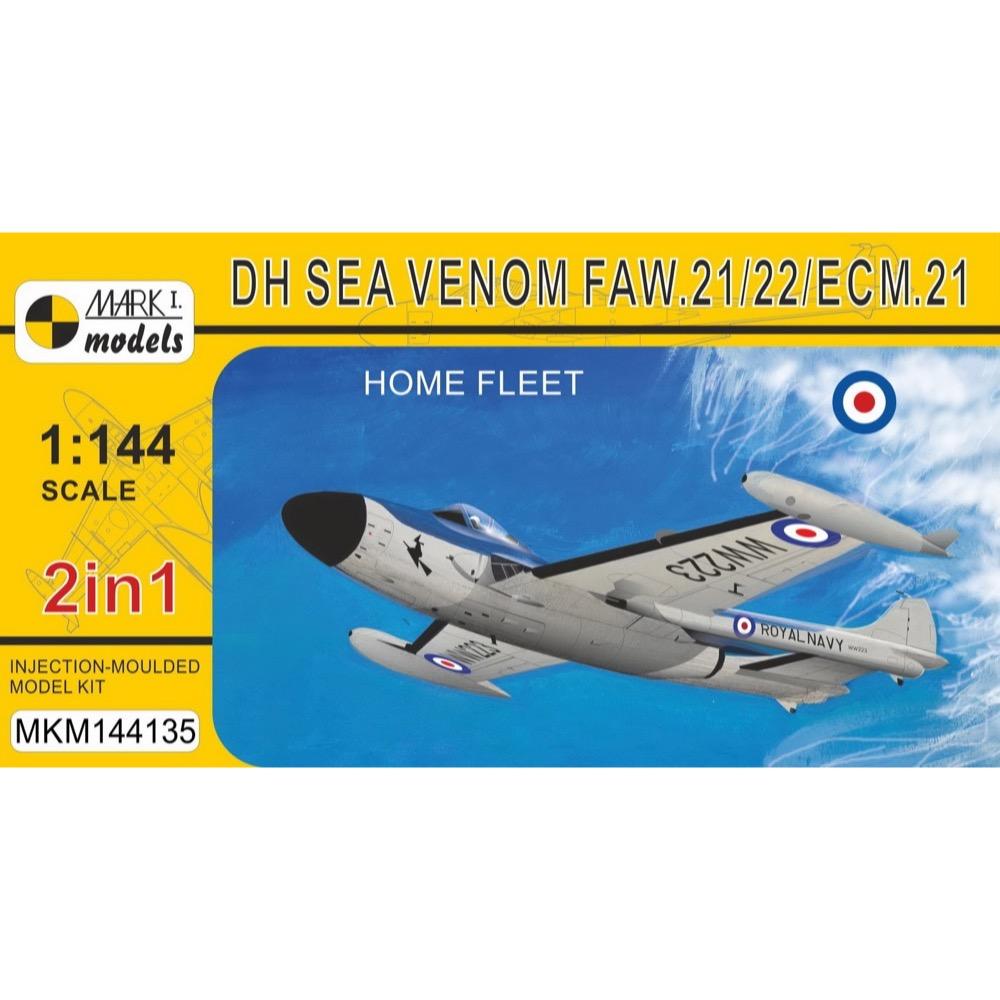
Mark One Models 144135 1/144 De Havilland Sea Venom FAW 21/22/ECM.21 Home Fleet
18.00
$
<p>The de Havilland Sea Venom was a British jet all-weather fighter developed for the Royal Navy from the RAF's Venom NF.2 night fighter. First flown in April 1951, the Sea Venoms were produced as the FAW.20 (50 a/c), improved FAW.21 (167 a/c) and uprated FAW.22 (39 new built and other Mk.21s converted). In total, 256 aircraft were taken on FAA's charge, while 39 Sea Venoms, designated FAW.53, were delivered to the Royal Australian Navy in 1956.</p>a


